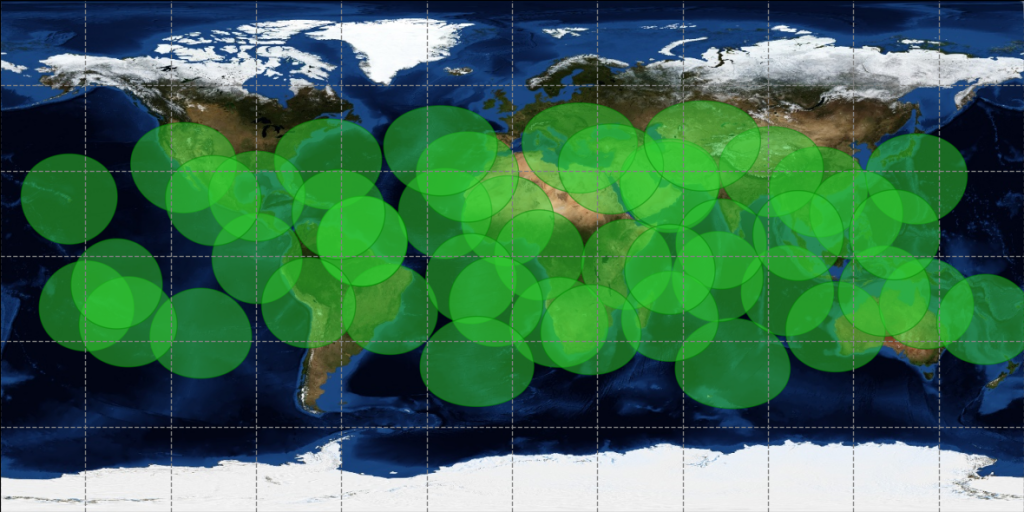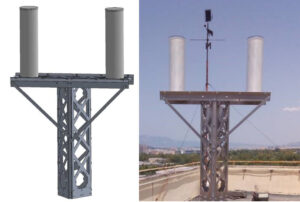The nerve centre of the SVOM mission’s scientific strategy, the French-designed alert network enables information to be transmitted rapidly and at any time between the satellite and Earth. In order to gather the information needed to determine the distance of the burst, it is essential to complete the multi-wavelength tracking begun in space.
To do this, as the satellite is in low orbit, the network comprises 47 antennas distributed as evenly as possible over the Earth’s surface, between latitudes -30° and +30°, the zones in which the satellite oscillates. These antennae receive the radio signal sent by the satellite when a burst is detected.

The furtive and transient nature of a gamma-ray burst requires rapid transmission of the alert signal. The message therefore travels from the satellite to the ground in around ten seconds via a VHF (Very High Frequency) radio channel in a frequency band between 137 and 138 MHz, to be picked up by the network’s radio receivers. The telemetry packets received are then relayed via the Internet to the French Science Center (FSC), where the original message is reconstructed and immediately transmitted to the dedicated GFTs robotic telescopes, which are responsible for improving the location of the burst and giving an initial indication of its distance.
The performance objective of this network is to enable the alert message to be transmitted to the robotic telescopes in less than 30 seconds after detection on board the satellite. The results of the observations made by the GFT telescopes are sent back to the FSC before being broadcast to the large telescopes. These large telescopes, with their smaller field of view, can acquire the spectrum of the burst and thus estimate its distance by measuring the redshift. If all goes well, thanks to this system, it takes less than 4 minutes for the large optical telescopes to begin acquiring the spectrum of an outburst.
As of 4 February 2025, the network comprises 47 stations.
- Hartebeesthoek in South Africa (HBK)
- Rikitea in French Polynesia
- Gran Canaria Island
- Songkhla in Thailand
- Libreville in Gabon
- Manila in the Philippines
- Maidanak in Uzbekistan
- Nanning in China
- Wise observatory in Israel
- Male in the Maldives
- Darwin in Australia
- Santa Maria in the Azores
- Sharjah in United Arab Emirates
- Ascension Island
- Papeete in French Polynesia
- Santiago in Cape Verde
- Martinique island
- Palau Islands
- Cairns in Australia
- Marquesas in French Polynesia
- Chimijima in Japan
- Diego Garcia atoll
- Carnarvon in Western Australia
- Al Ain in United Arab Emirates
- Cocos Islands
- Mahe in the Seychelles
- Lhasa in China
- Galapagos islands
- San Pedro Martir in Mexico
- Merida, Yucatan in Mexico
- Chamela in Mexico
- Hawaii island
- Ougadougou in Burkina Faso
- Easter Island
- Saint Helena Island
- Reunion Island
- Amsterdam Island
- Kourou in French Guiana
- Tristan Da Cunha Island
- The Bermuda archipelago
- Arequipa in Peru
- Noumea in New Caledonia
- Athens in Greece
- Malindi in Kenya
- Guanhaes in Brazil
- Gamsberg in Namibia
Decommissioned stations


